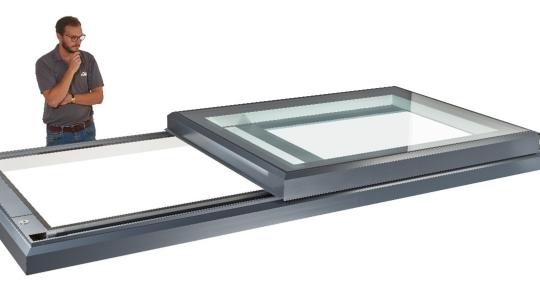What class is my glass?
Class 0, 1 and 2 are often specified on projects with rooflights but what do they mean, and where do they come from?
CWCT (Centre for Window and Cladding Technology) is a body based at Bath University that publishes guidance for the construction industry on weather and fire resistance, glazing, impact resistance and many other construction topics. Although these are not regulations or British standards (there are many overlaps) they are however widely accepted in the construction industry as canon.
There are countless different scenarios possible on a project so building regulations tend to be quite vague and state in Regulation 7 that “building work is carried out with materials that are appropriate for the circumstances and which are fixed so as to perform the functions for which they are designed.” The requirement is limited to the performance affecting health and safety. There are different ways of doing this through compliance with British standard and testing. For rooflights its about ensuring the safety of people above and below the roof.
CWCT’s technical notes are written primarily for commercial applications rather than domestic. However, due to the vagueness of building regs it is still often used as a go-to standard for domestic projects.
The classification of the roof (ie. Class 1) is defined in CWCT technical note TN 66 and the testing and assessment in TN67. Each class is for a different application and has different testing for the glass. In this post I will talk about what class is relevant to your application. What the testing entails is a post for another time.
Fragile or non-fragile?
A fragile surface is defined in the Work at Height Regulations as:
‘A surface or assembly which would be liable to fail if any reasonably foreseeable loading were to be applied to it.'
This is where it gets a bit tricky as is someone falling onto the roof or dropping tools onto it “reasonably foreseeable”? In some situations, it definitely is. The classes of roof are a kind of breakdown of the likely amounts of contact that a person might have with the roof/rooflight starting with Class 0 where it has been designed for people to walk on it all the time to Class 3 where people are never to come in direct contact with it.
Class 0 – non-fragile
Is the glass roof accessible to the public? If so then it will be Class 0 and treated as a floor and should be designed as such. Even in a domestic situation like a private roof terrace which isn’t technically “accessible to the public” if the rooflight is being walked on regularly we would strongly advice using a walk-on glass floor. A fixed skylight is not appropriate for this situation.
Class 1 – non-fragile
Sometimes there are situations where the rooflights need to be walked over occasionally to clean it or access other areas of the roof. This would be a Class 1 roof. The rooflights would therefore have to support both the weight of people on the glass and their equipment. This also means that it must be resistant to impact from the person falling onto the rooflight or dropping something onto it.
Class 2 – non-fragile
This is when the rooflight is not intended to be walked on at all but where someone walking next to it could trip and fall onto it. This would be a common situation for a product like the fixed skylight or the sliding rooflights where they have been installed on a flat roof and are occasionally cleaned but don’t have to be walked on.
Class 3 - Fragile
This would be if the rooflight is never walked on and is behind barriers so that any maintenance like cleaning should be done from behind the barrier using long handled equipment. Although people shouldn’t be able to fall on the glass it should still be designed to withstand equipment dropped onto it. This type of roof is slowly being phased out, especially in the commercial sector however it is still very common in the domestic sector.
Summary
When designing anything we should always be trying to reduce risk and that is exactly what the above guidance is about. Following the guidance for a commercial project like a shopping centre is more straight forward than a domestic situation. If you’re not sure it’s always best to get some advice. It’s not always practical to follow everything to the letter however it’s a good starting point and although there is limited legal reality to the above guidance, that doesn’t mean that it shouldn’t be followed.
For more information or if you have a project that you would like to discuss with us
Please contact us on 01223 79 22 44 or via email sales@nextgenrooflights.co.uk
Please note: this article is a brief summary to try and help people understand what the above terms mean but is no substitute for the Technical notes provided by CWCT. As well as the CWCT classifications of a roof (0, 1, 2 & 3) there is also the classifications (A, B &C) which are defined by the ACR (Advisory Committee for Roofsafety) for more information on this visit https://www.the-acr.org/
References:
CWCT-TN66 Safety & Fragility of Glazed Roofing – guidance on specification
The Work at Height Regulations 2005, available from www.legislation.gov.uk






